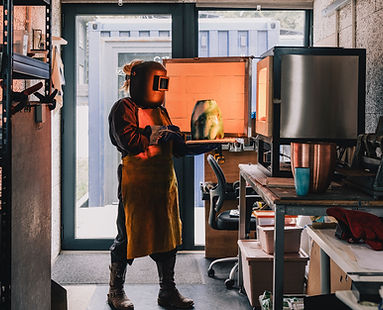Biography

Sinéad O’Connor is an award-winning enameller whose practice explores the dynamic interaction between glass, metal, and heat. Working in a contemporary style, she experiments with the chemistry of enamel, pushing materials to their limits through extreme temperatures to reveal unexpected reactions and surfaces.

Primarily working with copper, Sinéad embraces the natural oxides that emerge during firing to influence and transform the colour of the enamel. She often employs traditional techniques such as sifting, sgraffito, and overfiring, combining different types of enamel to create subtle depth and texture. Many of her pieces are textured before enamelling, allowing molten glass to settle within the indentations and highlight the movement of the material under heat. Frequently, the enamel is drawn back to expose the raw copper beneath, creating a striking interplay between polished metal and vitrified glass.

Her work has evolved from her early days as a silver jeweller, to include sculptural and statement pieces for galleries and collectors, alongside smaller tactile bowls that invite touch and close observation. Each copper form is handspun to her design by master craftsman Warren Martin of Sheffield, whose precision complements her experimental approach

Sinéad is currently working on pieces for upcoming gallery exhibitions in 2026 and experimenting with some new designs for outside sculptures.

